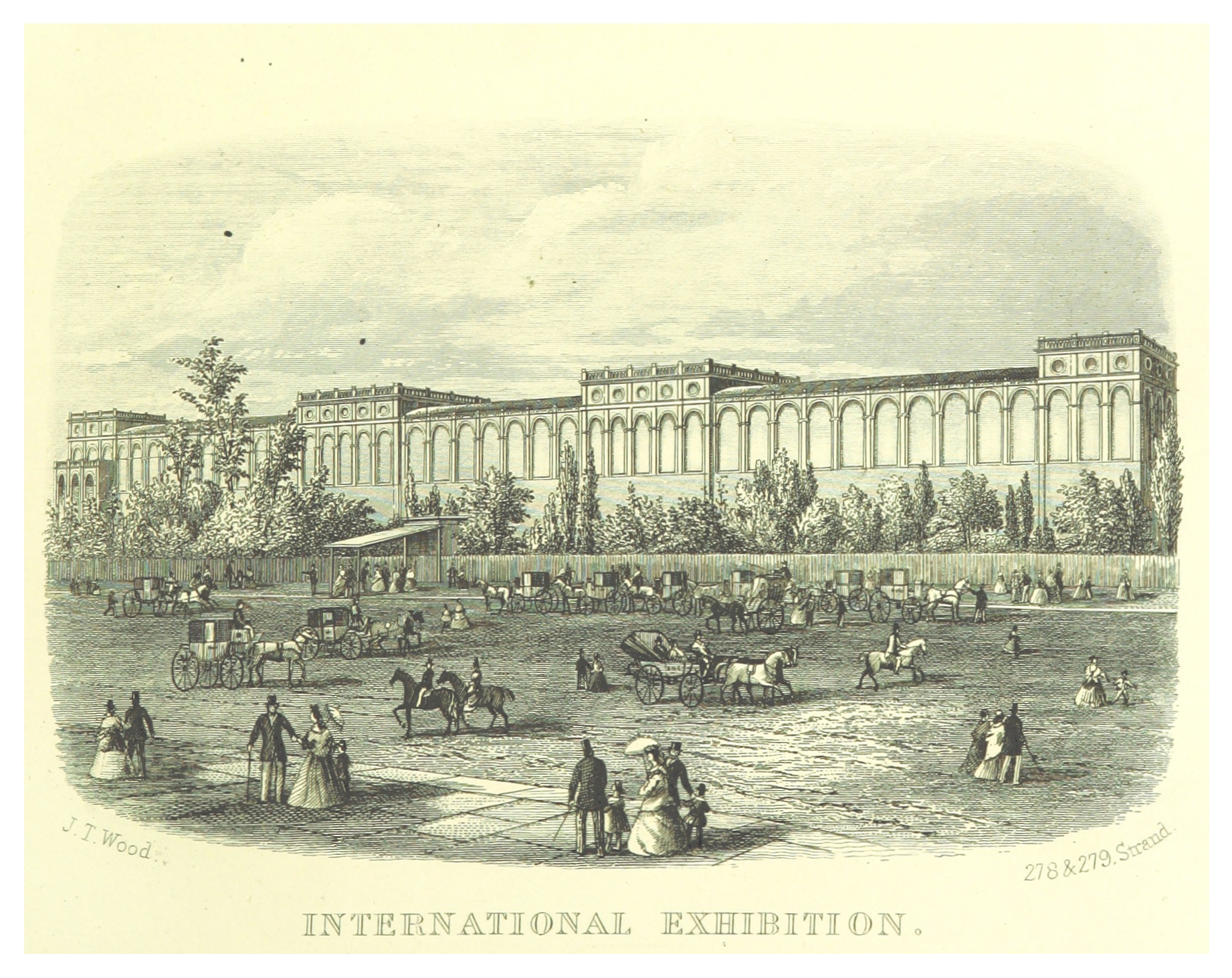Annual International Exhibitions (London 1871–74) on:
[Wikipedia]
[Google]
[Amazon]
 Each year from 1871 to 1874 an Annual International Exhibition was held in
Each year from 1871 to 1874 an Annual International Exhibition was held in
 Each year from 1871 to 1874 an Annual International Exhibition was held in
Each year from 1871 to 1874 an Annual International Exhibition was held in London
London is the capital and largest city of England and the United Kingdom, with a population of just under 9 million. It stands on the River Thames in south-east England at the head of a estuary down to the North Sea, and has been a majo ...
. These followed on from the 1851 Great Exhibition of the Works of Industry of All Nations and the 1862 International Exhibition
A world's fair, also known as a universal exhibition or an expo, is a large international exhibition designed to showcase the achievements of nations. These exhibitions vary in character and are held in different parts of the world at a specif ...
in London, and the many international exhibitions which had been held in various countries since 1851.
The first received over a million visitors and made a profit, but the subsequent three had fewer visitors and all made a loss.
Details of the 1873 Exhibition, officially described as ''London Annual International Exhibition of all fine arts, industries and inventions'', are quoted in this source.
Colonial Exhibitions
Colonial contributions to the annual international exhibitions in London were primarily contained in the Queensland annex. In order for the colonies to contribute to the annual international exhibitions in London, there needed to be more space for in order for them to be able to set up their exhibitions. This required the construction of a new building. This new building needed funds in order to be built and to be kept in top condition throughout the years, in the form of maintenance, hence every colony that would participate in the exhibition within the Queensland Annex would be asked to donate funds based on the amount of their earnings. In the first year, there were only three colonies that took part in the Queensland annex, more precisely the Belgian annex. The three colonies that took part in this were New South Wales, South Australia and Victoria, during the London exhibition in 1873. During the London exhibition in the year 1873, the colonial exhibitions were not primarily focused on presenting recent technological developments of the current year, which was typical of nations during annual exhibitions. Instead the colonial exhibitions favored showing artworks that depicted how the colonies lived and/or were perceived to have lived and their popular exports. This section of the annual international exhibitions in London, that enabled colonies to participate in the exhibitions, known as the Queensland annex continued to remain running until the exhibition itself was no longer open. All of the colonies that held exhibitions in the Queensland annex, after 1873, followed in the footsteps of the first three colonies that held exhibitions and would primarily present artworks about how daily life in the colonies was and their popular exports.A Special Report on the Annual International Exhibitions of the Years 1871, 1872, 1873, & 1874, Drawn Up by Sir Henry Cole, K.c.b., Acting Commissioner in 1873 and 1874, and Presented by the Commissioners for the Exhibition of 1851 to the Right Honourable Richard Assheton Cross, &c. &c., One of Her Majesty's Principal Secretaries of State. , 2006. Internet resource.Indian Exhibitions
Unlike the colonies, India was actually present all four years that the annual international exhibitions in London were active. However, unlike the colonies that depicted the general life of the colonies and kept a similar theme throughout the years, the exhibitions that represented India had a different theme/subject each year. These themes of the India portion of the exhibitions in chronological order were woolens/pottery, jewelry, silks and leather objects. During the London exhibition of 1871 was popular among the general public. In 1872 the exhibition had a theme of showing jewelry from India. The jewelry that was presented was not limited to the jewelry of certain classes of Indian society and instead the exhibition of 1872 showed pieces that were worn by both sexes from all economic classes. The third exhibition, which took place in 1873 was heavily focused on presenting Indian silks. The silks that were shown during the exhibition were both plain and embroidered. During the final year of the international annual exhibition in London, the primary theme of the Indian proportion of the exhibition was leather made objects. However, it is important to note while each year of the annual exhibition that the Indian exhibition did have a theme, the exhibitions representing India were not limited to said themes. In fact, during every annual exhibition there was a large amount of Indian artwork shown. These artworks included ornaments, miniatures, carvings and embroideries, etc... made of inlaid wood, metal works, ivory, onyx.The International Exhibition, 1871. London: Virtue & Co., 1871. Internet resource. These exhibitions were presented in a location known as an Indian court.References
{{DEFAULTSORT:Annual International Exhibitions (London 1871-74) World's fairs in London 1870s in London 1871 in London 1872 in London 1873 in London 1874 in London Festivals established in 1871 1871 festivals 1872 festivals 1873 festivals 1874 festivals 1871 establishments in England